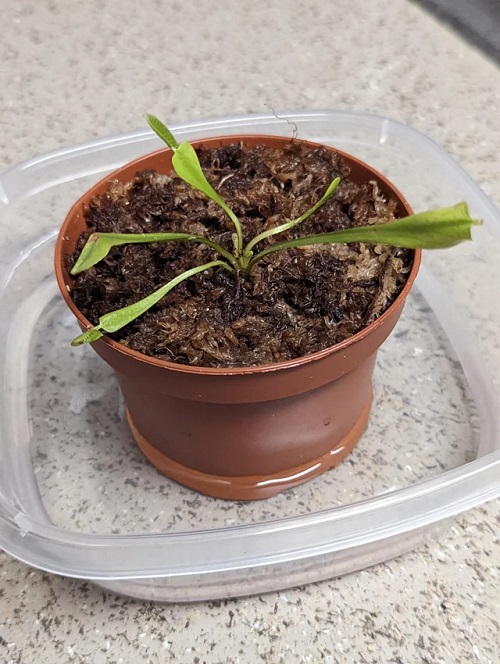Want to know How to Grow Orchids from Seeds? It is not that difficult and you can do it easily with the help of this guide!
Growing these exotic blooms is not that hard if you know the right way. Here’s all you need to know about How to Grow Orchids from Seeds.
Check out the best tricks to make orchids re-bloom here
Sourcing Orchid Seeds
Orchid seeds are often referred to as some of the smallest seeds in the world. They are indeed tiny, typically ranging in size from approximately 0.3 to 1.3 millimeters in diameter. Due to their small size, orchid seeds are sometimes referred to as dust-like or resembling fine powder.You can obtain orchid seeds through various means:
- Purchase from specialized orchid nurseries or suppliers.
- Join orchid societies or clubs that offer seed exchanges or sales.
- Attend orchid shows or exhibitions where seeds may be available for purchase.
Best Soil for Planting Orchid Seeds
Orchid seeds do not require traditional soil for germination, as they have unique requirements different from those of regular plants. Instead, they need a sterile and well-draining medium to grow successfully. Here’s a recommended soilless mix for planting orchid seeds:
Agar or Gelatin Mixture: Orchid seeds require a gel-like medium to germinate. You can create this mixture by combining:
- 1 part agar or gelatin powder
- 4 parts distilled water
- Optionally, add a small amount of sphagnum moss and perlite or vermiculite, following the manufacturer’s instructions.
Here are the best types of yellow orchids
What is the Right Time to Plant Orchid Seeds?

Orchid seeds require a warm and consistent temperature, usually between 70°F to 85°F (21°C to 29°C), for successful germination. It’s important to create a controlled environment that maintains these temperatures throughout the year.
If you have the means to provide the appropriate conditions, you can start planting orchid seeds whenever you have them available, regardless of the season. This allows you to begin the lengthy germination process and take advantage of the time it will take for the seeds to grow into mature plants.
Have a look at the rarest orchids here
How to Plant Orchid Seeds?
Planting orchid seeds and ensuring successful germination requires careful attention to detail and adherence to specific steps.
- Sterilization: It’s essential to create a sterile environment to prevent contamination. Sterilize all tools, containers, and surfaces that will come into contact with the seeds using disinfectants like bleach or isopropyl alcohol.
- Prepare the Growing Medium: Orchid seeds require a sterile and well-draining medium. One common option is to use agar or gelatin mixture, as mentioned earlier. Prepare the mixture according to the instructions, ensuring it is warm and liquid before proceeding.
- Sow the Seeds: Using sterilized tweezers or a sterilized toothpick, carefully handle the orchid seeds. Sprinkle the seeds evenly on the surface of the agar or gelatin mixture in the container. Remember that orchid seeds are extremely tiny, so a light touch and even distribution are crucial.
- Close and Seal the Containers: Close the containers tightly to create a sealed environment. You can use lids or cover the containers with plastic wrap secured with rubber bands. This helps maintain humidity and prevent contamination.
- Germination Environment: Place the sealed containers in a warm and well-lit area. Orchid seeds typically require temperatures between 70°F to 85°F (21°C to 29°C) for germination. Indirect light or fluorescent lighting is preferable, but avoid direct sunlight, as it can cause overheating.
- Maintain Moisture and Humidity: Check the containers regularly for condensation, which indicates an appropriate humidity level. If condensation is insufficient, you can add a small amount of sterile water to maintain moisture levels.
- Patience and Care: Orchid seeds can be slow to germinate, often taking months to years. Regularly monitor the containers for any signs of fungal or bacterial growth, and remove any contaminated seeds or growths promptly. Avoid opening the containers unnecessarily to minimize the risk of contamination.
Note: Remember, growing orchids from seeds is a challenging and time-consuming process that requires patience and attention to detail. Different orchid species may have specific requirements, so it’s advisable to research the particular species you are working with or seek guidance from experienced orchid growers.
As growing orchids from seeds can be a very time consuming process, Here’s how to multiply orchids easily and faster!
Transplanting Orchid Seedlings
Once the orchid seedlings have developed into small plants with visible roots and leaves, they can be carefully transplanted into suitable growing pots or containers with a well-draining orchid mix.
Transplanting should be done with extreme care to avoid damaging the delicate roots.



